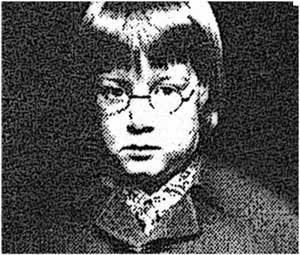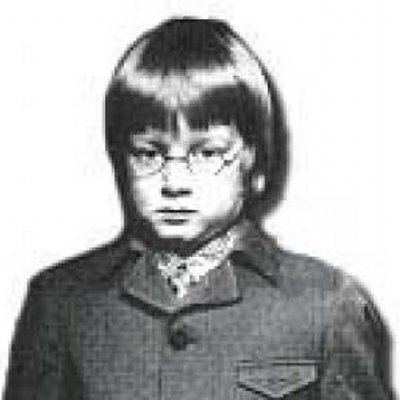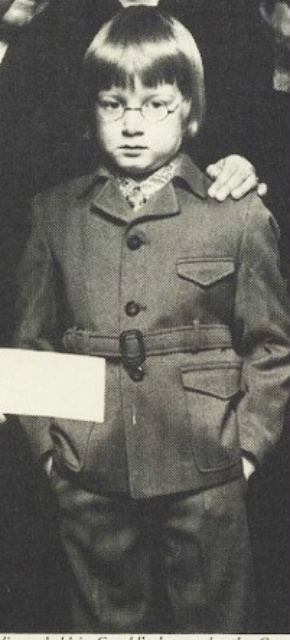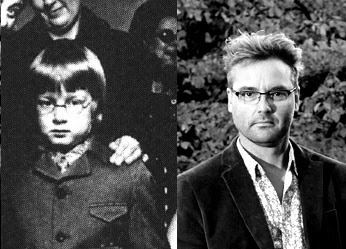Portrayed by André C. Le Breton Gender Male First appearance Thick as a Brick Last appearance Homo Erraticus | Nickname(s) Little Milton Nationality British Created by Ian Anderson | |
 | ||
Occupation Poet, Military, Priest, Banker, Homeless | ||
Gerald Bostock is a fictional character originally created by Ian Anderson for his band Jethro Tull's 1972 concept album, Thick as a Brick; Bostock is credited with writing the lyrics to the album (though Anderson in fact authored them himself). Bostock is also the focus of Anderson's 2012 solo album, Thick as a Brick 2: Whatever Happened to Gerald Bostock?, as well as the purported lyricist for Anderson's 2014 solo album Homo Erraticus.
Contents

Thick as a Brick

Bostock's first appearance is on the original cover art and packaging of the album Thick as a Brick, which is designed to look like a small West Country village periodical (that actually folds out into a full-length newspaper with 12 pages), entitled the St. Cleve Chronicle & Linwell Advertiser. The front-page story of Thick as a Brick's newspaper cover—dated Friday, January 7, 1972—describes the 8-year-old Gerald "Little Milton" Bostock as the intellectually exceptional son of David and Daphne Bostock of No. 6 Pollitt Close, St. Cleve, who together moved there as a family four years prior from Manchester. Bostock is described as a child prodigy who recently received an award for his epic poem, "Thick as a Brick", from the Society of Literary Advancement and Gestation (SLAG). The article focuses on the fact that this award was revoked after Bostock read the poem aloud along with the offensive word "g__r" during a BBC television broadcast and because of doubts about his psychological stability voiced in hundreds of threats and protests from the public. The paper pays respect to Bostock's work by displaying his "poem" in its entirety and notes that Jethro Tull has decided to use the poem as the lyrical centrepiece of their new album. (The album is even reviewed in the paper by the equally fictitious Julian Stone-Mason: a pseudonym of Ian Anderson.)

On the inside cover of the LP (the first page of the "newspaper") there is an additional article entitled "Little Milton in Schoolgirl Pregnancy Row", which talks about a 14-year-old girl named Julia Fealey (pictured on the front cover to Gerald's left), who blames her recent pregnancy on Bostock. The report continues to state that her doctor claims that the girl "was obviously lying to protect the real father."

Later, in a 2012 interview with BBC breakfast, when introducing Thick as a Brick 2, Anderson described Bostock as a fictional character who had just won a poetry competition for this elaborate precocious piece that went on to be the lyrics of the song Thick as a brick. Subsequently, in 2012, Anderson continued the parody, saying that Bostock's parents "...had lied about his age - he was actually nine when he entered the poetry competition and ten when he was disqualified", and that he was 50 years old now.
Thick as a Brick 2

In April 2012, Ian Anderson released a follow-up, solo concept album, Thick as a Brick 2: Whatever Happened to Gerald Bostock?, about whose premise Anderson states: "I wonder what the eight-year-old Gerald Bostock would be doing today. Would the fabled newspaper still exist?" In this follow-up album, Anderson presents five unrelated "parallel possibilities" for Bostock's adulthood, now forty years after his childhood poetry scandal:
In the style of the original Thick as a Brick's newspaper cover, Ian Anderson set up a parody of a newsletter on the Internet called StCleve.com, which has supposedly succeeded and replaced the now-defunct St. Cleve Chronicle. An article on the homepage mentions the adult Gerald Bostock as a long-time Labour activist who lost his political seat and has now retired from the political arena at age 50 (further claiming that he was, in fact, 10 years old in 1972 rather than 8: a lie his parents used to boost the media attention on him). The article describes that Bostock may now write his memoirs or a scandalous screenplay and that he has recently purchased, on the outskirts of the communities of St. Cleve, Linwell, and Little Cruddock, a 6-acre estate at Mulberry Lane (a possible reference to the hypothetical story of "Gerald: A Most Ordinary Man").
Homo Erraticus
As a result of the success of Thick as a Brick 2, Bostock apparently befriended Ian Anderson and took a "temporary sabbatical job as tour manager for Ian Anderson's rock concert tours". In 2014, Bostock, now in his early fifites, returns to a life of semi-retirement in St Cleve with his wife, focusing on his suddenly renewed passion for writing, when he soon "comes across a dusty, unpublished manuscript, written by local amateur historian Ernest T. Parritt, (1865 -1928) [...which] summarises key historical elements of developing civilisation in Britain and seems to prophesy future scenarios too". Parritt, two years before his death, began experiencing memories of multiple past lives and, considered an eccentric, was quickly forgotten in his own era. However, "Bostock decides to take inspiration from Parritt's potted series of historical events and utilises elements from the manuscript as the basis for rock song lyrics. Suitably dramatised and exaggerated as metaphors for modern life", the new lyrics that Bostock writes become Homo Erraticus, which he sends to Anderson, who sets the lyrics to music, resulting in the album of the same name.
Background information
Gerald Bostock and his writings are entirely fictional creations of Ian Anderson. The child model depicted as Gerald Bostock in the original album cover and associated materials is André C. Le Breton, represented by the Elizabeth Smith Agency. Le Breton was also featured in European television commercials in the early 1970s and modeled for Freemans clothing catalogues, Russelda knitwear, and other brands. Later in life, he pursued a career as a music producer and directed films for bands, including Crass Agenda, under the name Le Chaos Factory.
